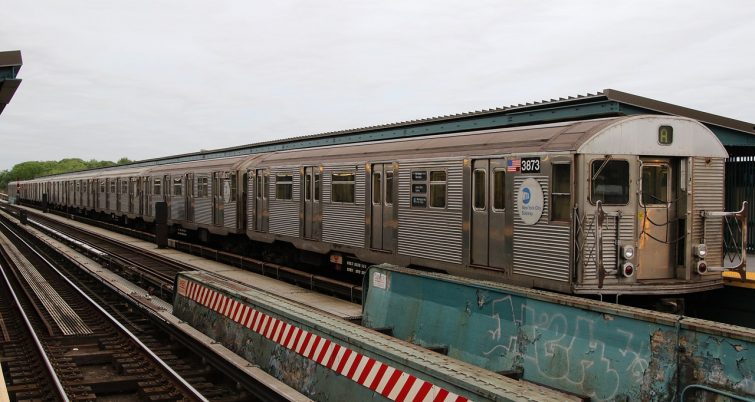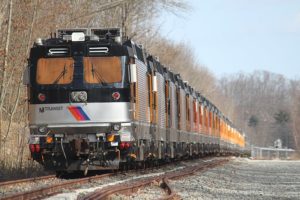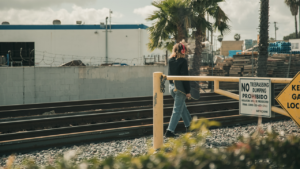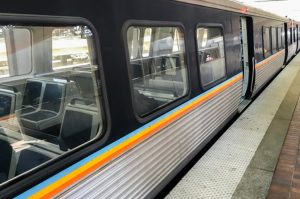Federal funding enables MTA to breathe easier through first half of 2024
Written by David C. Lester, Editor-in-Chief
From a financial point of view, the MTA can breathe a sigh of relief.
The Metropolitan Transportation Authority (MTA) [yesterday] announced that Federal funding will provide the Authority with financial stability through the first half of 2024. The MTA is expected to receive $10.5 billion in Federal funding from December 2020’s Coronavirus Response and Relief Supplemental Appropriations Act (CRRSAA) and the American Rescue Plan Act (ARPA) passed in March 2021. As a result, the Authority will not have to take immediate action on cost-cutting measures such as right-sizing of service and wage freezes. The MTA will also forgo a fare increase in 2021.
Since the February plan farebox revenues have improved, toll revenues have remained consistent with the best-case scenario, and Congress passed another Federal relief package that is expected to provide $6.5 billion in aid to the MTA. Farebox revenue, which was forecasted for the worst-case scenario in February, is now trending toward the midpoint scenario, increasing revenue by $3.7 billion through 2024. Toll revenue holding consistent to the best-case scenario, is expected to increase revenue by $799 million by 2024. Absent of recurring revenue streams to offset the postponement of fare increases, service right-sizing and wage freezes, the Authority forecasts a deficit of $605 million in 2025, even after the use of $2.9 billion of deficit bond proceeds.
“Thanks to the infusion of Federal funding provided by Congress through December’s relief package and March’s American Rescue Plan, the MTA’s finances are on much better footing,” said MTA Chairman and CEO Patrick Foye. “This Federal aid was made possible by extraordinary leadership from Majority Leader Schumer, Speaker Pelosi, and the bipartisan New York delegation who ensured mass transit was not forgotten in the nation’s recovery.”
“The $10.5 billion in expected Federal dollars gives us a bridge towards the future, which now allows us to see how ridership further recovers and avoids some of the drastic cost-saving measures we outlined in February’s plan,” said MTA Chief Financial Officer Robert Foran. “With farebox revenue trending towards the midpoint scenario and toll revenue trending towards the best-case scenario, the major challenge ahead will be addressing the structural deficits remaining in 2025.”
Not included in the financial plan is risk that some intended revenues from CRRSAA might be redirected to another state.
“We have ongoing discussions with New Jersey and Connecticut with respect to CRRSAA and American Rescue Plan funding,” Chairman Foye said. “Thanks to Senator Schumer and the New York delegation for providing an extraordinary level of Federal funding. But the stakes for the MTA in that three-state discussion are hundreds of millions of dollars which is a material amount of funding at a time when we face substantial ongoing deficits.”
To cover the budget deficits in 2024 and 2025, the MTA was granted the authority by the 2020-2021 State Enacted Budget to borrow up to $10 billion in deficit financing through December 2022. In 2020, the MTA utilized the Federal Reserve’s Municipal Liquidity Facility (MLF),which the Federal Reserve established as a source of emergency financing for state and local governments and public entities to ensure they have access to credit during the COVID pandemic, to borrow the maximum $2.9 billion allowed. The MLF loan is due for repayment in 2023, and the MTA expects to issue long-term bonds in 2023 to repay the Federal Reserve.
During the February meeting of the MTA Board, the Board did approve a toll increase that took effect in April on its bridges and tunnels, which raised tolls rates to yield a 6% increase in revenue and preserves the resident discount programs. The Board also approved the creation of a new mid-tier toll rate for motorists who are NYCSC E-ZPass holders but are nevertheless tolled via license plate because they are not using their E-ZPass tags properly.





